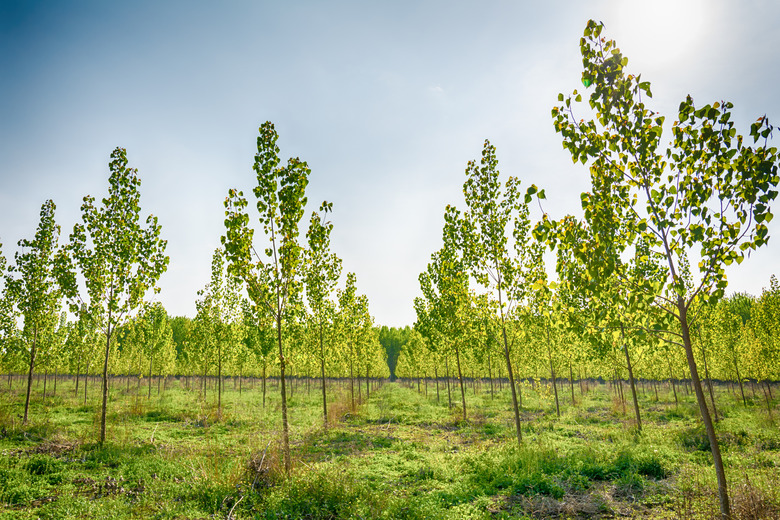Advantages And Disadvantages Of Afforestation
Afforestation is the establishment of forests on lands that have been without forests for some amount of time, such as previously forested lands that were converted to range, and the establishment of forests on lands that have not been forested in the past. The term "afforestation" is most often used in conjunction with discussions of carbon sequestration, which is the process by which carbon dioxide is removed from the atmosphere. While afforestation can restore previously forested areas and help to remove carbon dioxide, it can have detrimental effects on species diversity and agriculture profits.
TL;DR (Too Long; Didn't Read)
Afforestation can restore forests, and also helps protect again soil erosion and flooding. Done incorrectly, though, afforestation can modify a biome, which can reduce biodiversity.
Forest Restoration
Forest Restoration
Logging, urban sprawl and agriculture all demand the cutting down of trees to make way for development or economic growth. Deforestation can lead to habitat loss, changes in drainage regimes and local climate, and loss of biological diversity. Restoring these areas may be as simple as allowing forests to naturally re-establish themselves over time, or may require a more involved approach including the planting of native trees by hand. Restoration in previously forested areas can halt and even reverse biodiversity losses, provide carbon sinks to help clean the atmosphere, and return the local area to its natural climate and moisture regimes.
Afforestation in Previously Unforested Areas
Afforestation in Previously Unforested Areas
Forests help make semiarid lands more sustainable by protecting bare ground from soil erosion, and help to lock in soil moisture. The conversion of some areas into managed forests, such as the Acacia mangium Plantation in Brazil, helps to create jobs and sustainable infrastructure while at the same time reducing carbon dioxide emissions in the area. Foresting savannas and other grasslands, however, removes specialized habitat for many animals, reduces the local biodiversity of grasses, and may introduce and even encourage the invasion of non-native species into the landscape.
Afforestation as Flood Control
Afforestation as Flood Control
Efforts to restore bottomland hardwood forests in places like the Lower Mississippi Alluvial Valley focus not only on restoring biological diversity, but on water filtration, flood control and the prevention of sediment transport. In his paper "Forest and Flood, A New Angle," author Elmo Harris draws on his experiences in the LMAV overflow regions to advocate for restoration of forests in this area to control floodwaters. Forests help reduce the impact of flooding by delaying and reducing the size of floods, dispersing the water in a more gradual manner than over bare ground. However, replanting forests in these rich bottomland soils makes the land unavailable for agricultural use, which may have negative impacts on the local economy.
Disadvantages of Afforestation
Disadvantages of Afforestation
If not properly managed, afforestation can result in a reduction of local biodiversity, the modification of particular biomes, the introduction of non-native and potentially invasive species, reduced stream flow, and lost revenue from agriculture. Native grasslands that are converted to forests may not contain the same habitat for local species, and ill-managed reforestation efforts may result in the production of a monoculture that lacks not only plant diversity but reduces the number of available habitat types for forest inhabitants.
Cite This Article
MLA
Reid, Ari. "Advantages And Disadvantages Of Afforestation" sciencing.com, https://www.sciencing.com/advantages-disadvantages-afforestation-8524481/. 24 April 2018.
APA
Reid, Ari. (2018, April 24). Advantages And Disadvantages Of Afforestation. sciencing.com. Retrieved from https://www.sciencing.com/advantages-disadvantages-afforestation-8524481/
Chicago
Reid, Ari. Advantages And Disadvantages Of Afforestation last modified August 30, 2022. https://www.sciencing.com/advantages-disadvantages-afforestation-8524481/
